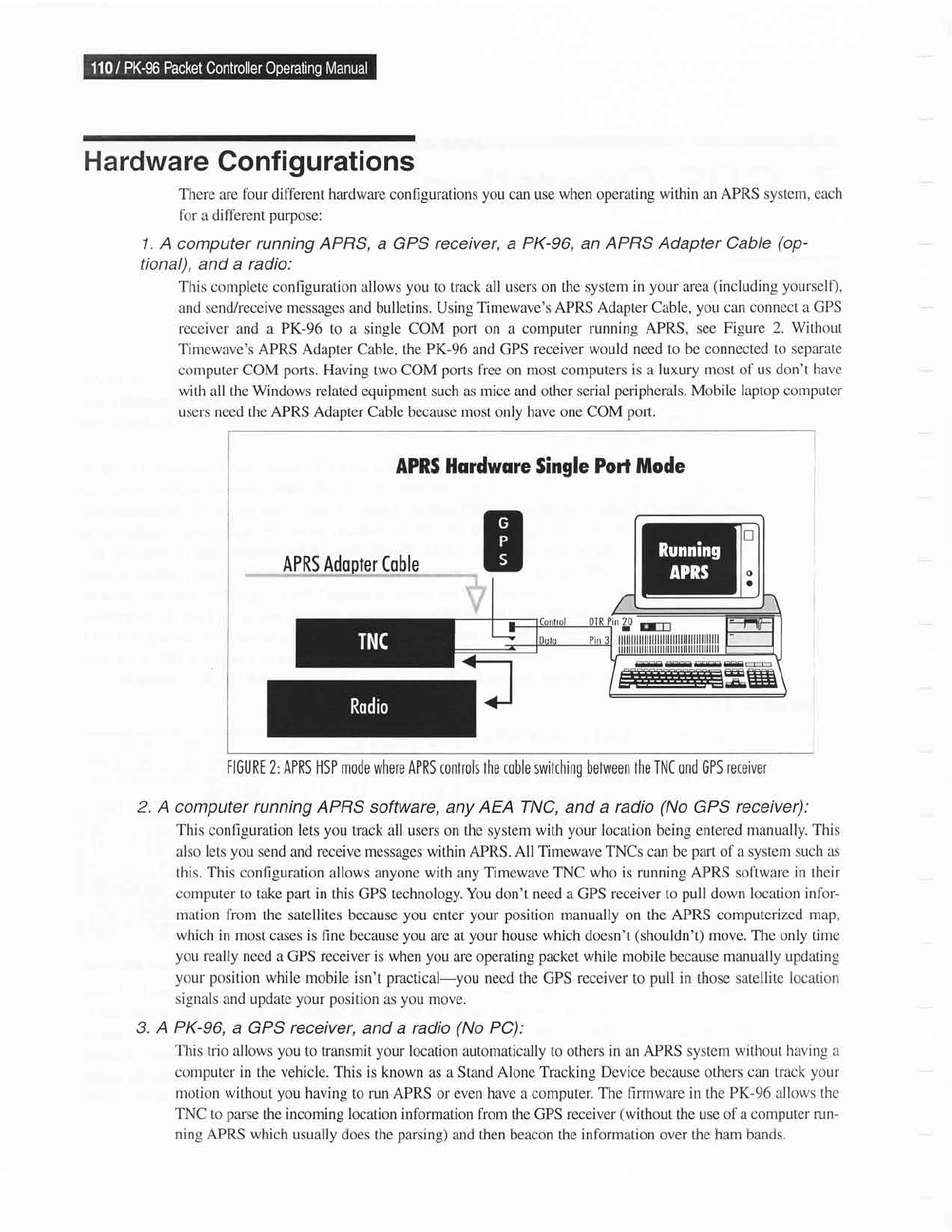Specifications
Table Of Contents

Hardware
Confi
g
u
rations
There are
four
different hardware configurations
you
can use
when
operating
within an
APRS system, each
fbr
a different
purpose:
1. A
computer
running
APRS, a GPS
receiver, a PK-96, an APRS Adapter Cable
(op-
tional),
and
a radio:
This complete configuration allows
you
to track
all users on the system
in
your
area
(including
yourself),
and send/receive messages and bulletins. Using
Timewave's APRS Adapter Cable,
you
can
connect a GPS
receiver and a PK-96
to
a single COM
port
on a computer
running APRS, see Figure
2. Without
Timewave's APRS Adapter Cable, the PK-96 and GPS receiver
would need to be connected
to separate
comput.er COM
ports.
Having two COM
ports
free on most computers
is
a
luxury most of us don't
have
with all the
Windows
related equipment such as
mice and
other serial
peripherals.
Mobile laptop con-rputer
users
need the APRS Adapter
Cable because
most only have one COM
port.
FIGURt 2: APRS HSP
mode
where APRS
controls fhe coble switching between
the TNC ond
GPS
receiver
2. A
computer
running
APRS software,
any
AEA TNC, and
a
radio
(No
GPS receiver):
This
configuration lets
you
track all users
on
the system with
your
location being entered
manually. This
also lets
you
send and receive messages within APRS. All Timewave TNCs can be
pafi
of a
system such as
this. This configuration
allows anyone
with
any
Timewave TNC who is running APRS software
in
their
computer to take
part
in this
GPS
technology. You
don't
need
a GPS
receiver to
pull
down location
infor-
mation from
the satellites because
you
enter
your
position
manually
on the
APRS
computerized
map,
which
in most
cases is fine because
you
are at
your
house which doesn't
(shouldn't)
move. The only
time
you
really need
a GPS receiver is when
you
are
operating
packet
while mobile because manually updating
your position
while
mobile isn't
practical-you
need
the GPS
receiver
to
pull
in
those satellite
location
signals and update your
position
as
you
move.
3.
A
PK-96, a GPS receiver,
and a radio
(No
PC):
This
trio allows
you
to transmit
your
location
automatically to others
in
an
APRS system without
having
a
computer
in the vehicle. This is known as
a Stand
Alone Tracking Device because others can
track
your
motion without
you
having
to
run APRS
or even have a computer.
The firmware in the PK-96 allows
the
TNC to
parse
the
incoming
location information from the GPS receiver
(without
the use of a computer
run-
ning APRS which
usually does the
parsing)
and
then
beacon the information over the ham bands.
APRS Hardware Single Port
Mode
\7
?.
30
qn










